
Beginning in the fall of 2014, the United States Department of Transportation (U.S. DOT) field offices began organizing pedestrian and bicycle safety assessments, on-the-ground examinations of transportation facilities conducted by a multidisciplinary, multi-agency team. By June of 2015, field offices from the Federal Highway Administration (FHWA), Federal Transit Administration (FTA), National Highway Traffic Safety Administration (NHTSA), Federal Motor Carrier Safety Administration (FMCSA), and Federal Railroad Administration (FRA) had hosted or participated in 52 assessments, one in every State, Puerto Rico, and the District of Columbia. More than 1,500 people, including elected officials, field office leaders, and representatives from local, regional, State, Federal, and non-governmental agencies took part, helping advance Secretary Foxx's Safer People, Safer Streets Initiative for pedestrian and bicycle safety. This report summarizes results from this effort; all photographs in this report come from the assessments.
The assessments were intended to facilitate and encourage relationship-building between people who work for different jurisdictions and share responsibility for creating safer streets. The assessments generated a buzz of enthusiasm at all levels. Many participants were excited to share their concerns and ideas by coordinating with stakeholders at other agencies that share a role in creating safer environments for walking and bicycling. Participants noted the value of bringing together a variety of organizations to learn from one another and build partnerships, and many noted the desire to organize additional assessment events around their State. Local elected officials participated in ten assessments, and senior U.S. DOT field leadership attended more than half of the events.
This initiative was also intended to help U.S. DOT promote assessments as an effective tool for improving pedestrian and bicycle safety. U.S. DOT has a long history of supporting on-the-ground assessments, ranging from formal pedestrian and bicycle Road Safety Audits (RSAs), to neighborhood walkabouts, because such assessments can provide substantial benefits to all road users while improving safety.
The local teams used a data-driven process to identify locations with pedestrian and bicycle safety challenges, and adapted existing assessment tools to fit the particular context. The teams considered site-specific recommendations and worked to envision broader systemic changes needed to improve safe walking and bicycling.
The assessments took place in a variety of contexts, and served as informal snapshots of pedestrian and bicycle travel conditions. However, the findings were consistent with more formal studies and audits of pedestrian and bicycle safety and indicate that physical as well as policy and coordination barriers continue to impede access to safe walking and bicycling.

Assessments from all States identified a wide range of physical barriers preventing safe walking and bicycling. The problems ranged from facilities in significant disrepair to missing infrastructure and poorly designed roadways and signals. Common findings included a lack of safe and comfortable sidewalks, crossings, and bicycle facilities. Many roadways and signal systems were designed to accommodate high volume, high speed vehicular traffic, without considering the needs of all roadway users. In many cases, the assessments noted challenges in ensuring that infrastructure meet the needs of users with visual and mobility impairments.
Since walking and biking are affordable and environmentally-friendly ways to reach public transportation, many of the assessments focused on, or included, an evaluation of safe bicycle and pedestrian access to bus stops and transit stations. Some of the barriers impeding safe access to transit included lack of safe, marked crossings and intersections; flawed station area design and traffic flow; poor sightlines; and inadequate lighting.
U.S. DOT has produced and supported the development of many resources of value to States and communities in eliminating these physical barriers and creating a safer road environment, and many are listed in this report.
In addition to identifying physical barriers, one of the purposes of the assessments was to examine how policies and lack of coordination across multiple departments or agencies present barriers to safe walking and bicycling. The policy and coordination barriers identified related to planning and project development, public engagement, changing community context, intergovernmental coordination, funding, data shortcomings, and the need for enforcement and education.
Participants in many of the assessments discussed how planning processes and policies often do not adequately consider the needs of people on foot or bicycle, resulting in projects that are unsafe or that do not accommodate all users. One way to ensure that transportation projects properly account for walking and bicycling facilities is to integrate them fully into the transportation planning and design processes for every project. The FHWA Bicycle and Pedestrian Program website contains many resources available regarding planning and project development.
Many assessments noted that transportation agencies need to do a better job of engaging stakeholders throughout planning and project development phases to ensure that their needs are reflected. In many cases, the assessments themselves proved to be an effective method of public engagement. Both FHWA and FTA offer resources to broaden the scope of public participation in the planning process.
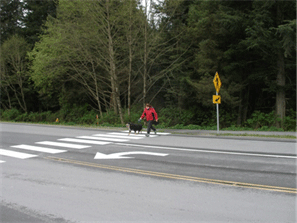
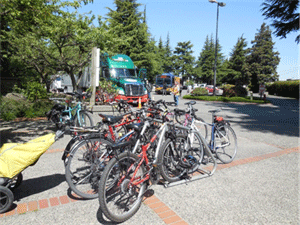
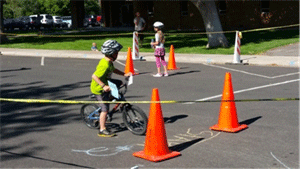
Other assessments identified locations where the original roadway design may have been appropriate for its use, but due to increased development and other changes in the community, the facilities are now insufficient to meet the community's current needs. Another recurring issue was of intergovernmental coordination - situations in which it was unclear who was responsible for providing and maintaining facilities to promote safe walking and bicycling. Some assessments identified the important role of transit agencies and Metropolitan Planning Organizations (MPOs) in fostering such coordination.
Finally, assessments also discussed the need for improved data on walking and bicycling networks, volumes, and needs, as well as funding opportunities to implement infrastructure projects and non-infrastructure programs. While many communities face shortfalls between available funding and system needs, the assessments demonstrated the importance of funding projects to support walking and bicycling, and also provided an opportunity for stakeholders to discuss funding opportunities and ways to leverage existing sources.
Throughout the report, we have highlighted some of the ways that communities used the assessments to better understand and address some of the barriers, and resources that local communities and the U.S. DOT can use, both at the physical and programmatic levels, to continue to work to improve safe walking and bicycling throughout the country.
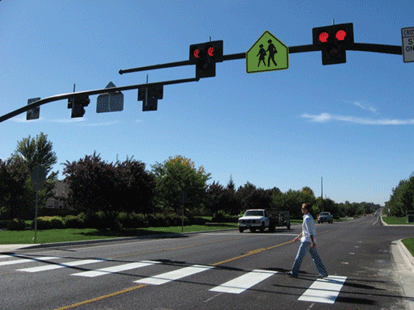
Secretary of Transportation Anthony Foxx has made pedestrian and bicycle safety one of U.S. DOT's top priorities. In 2014, he launched the Safer People, Safer Streets Pedestrian and Bicycle Safety Initiative (the Initiative). As part of the Initiative, the Secretary instructed U.S. DOT field offices from the Federal Highway Administration (FHWA), Federal Transit Administration (FTA), the National Highway Transportation Safety Administration (NHTSA), the Federal Railroad Administration (FRA), and Federal Motor Carrier Safety Administration (FMCSA) to convene and lead one road safety assessment focused on pedestrian and bicycle safety in every State (as well as in the District of Columbia and Puerto Rico). The U.S. DOT has long promoted and continues to promote conducting assessments of roadway facilities to foster safer walking and bicycling. The U.S. DOT has developed a variety of assessment tools, ranging from formal pedestrian and bicycle Road Safety Audits (RSAs), to neighborhood walkabouts, to using walkability and bikeability checklists to examine routes to school. Evidence has shown that such assessments can provide substantial benefits to all road users while improving safety.(1)
This initiative was intended to help U.S. DOT promote assessments as an effective tool for improving pedestrian and bicycle safety. Secretary Foxx identified the following goals for the assessment effort:
Facilitate and encourage relationship-building between people who work for different jurisdictions and share responsibility for creating safer streets.
Engage practitioners who are typically focused on pedestrian and bicycle safety, as well as those who are not.
Examine barriers to providing safe pedestrian and bicycle access to transportation infrastructure.
Use the assessments process to expand the national discussion around ensuring safe and accessible walking and bicycling networks.

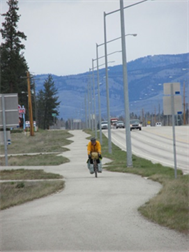
The road safety assessments conducted as part of this initiative varied in approach but were generally informal, on-the-ground examinations of transportation facilities conducted by a multidisciplinary and multi-agency team. These assessment activities did not constitute a formal audit or compliance review. The assessments focused on locations with documented or perceived problems related to pedestrian and bicycle safety and access. Effectively addressing these problems requires reviewing the physical design and enforcement issues on the ground, and examining the decisions that have led to those challenging conditions for walking and bicycling. The purpose of the assessments was for teams to consider site-specific recommendations as well as to envision broader systemic changes needed to improve safe walking and bicycling. While simply conducting an assessment does not immediately fix problems, the act of bringing together many partners to focus their attention on these issues lays the groundwork for effective interagency collaboration going forward.
While many pedestrian and bicycle-related decisions are ultimately made at the State and local level, U.S. DOT plays an important role in supporting access to safe walking and bicycling, whether through providing technical assistance, reviewing proposed plans and designs, encouraging flexibility in design and funding approaches, or assessing updates to internal policies and procedures. The U.S. DOT used the assessments as an opportunity to lead by example, increasing awareness and understanding of pedestrian and bicycle safety needs and concerns throughout U.S. DOT, and fostering communication and collaboration between agencies at all levels of government.
This report highlights some of the varied and creative methods used to conduct the assessments. It discusses examples of both infrastructure and non-infrastructure barriers identified through the assessments; how specific communities used the assessments to discuss and address barriers; and resources (existing and under development) to support communities in ensuring safe and convenient access to walking and bicycling.
1 For more information on the benefits of conducting road safety audits, see: https://safety.fhwa.dot.gov/rsa/benefits/.